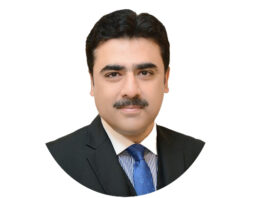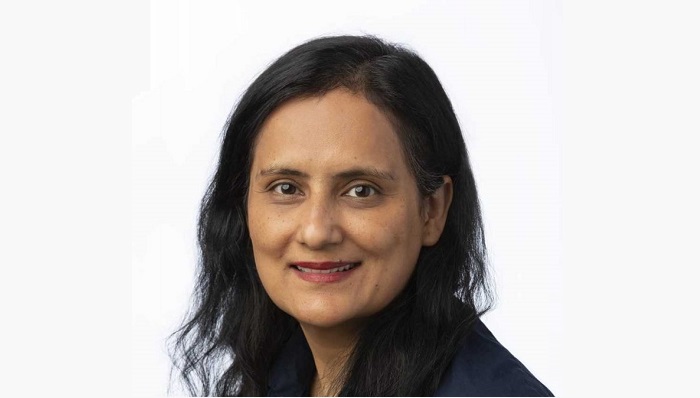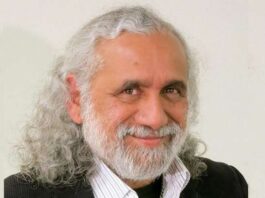James Baldwin quotes, “The paradox of education is precisely this – that as one begins to become conscious, one begins to examine the society in which he is being educated.” (A Talk to Teachers, 1963). Like most Pakistani students, I came across Balochistan as part of a routine Pakistan Studies lesson taught at school. The teacher at the time did not seem very passionate to discuss it, so the lesson was easily forgotten. Later, during my undergraduate studies, and through social media, I stumbled upon the subject again, and this time it piqued my interest. I questioned why we knew so little about Balochistan, and why did we not see it so often in the mainstream media.
Despite being rich in natural resources and having a vast coastline; political neglect, under-representation, and exploitative economic development models have contributed to the province’s low status against development indicators. According to a report in 2019, “Overall, 71% of the population in Balochistan is multi-dimensionally poor; the rural population is 85% and urban population is 38% multi-dimensionally poor”.
Given the current situation, Balochistan Rural Development and Community Empowerment Programme (BRACE) funded the by European Union and implemented by Balochistan Rural Support Programme (BRSP), National Rural Support Programme (NRSP) and Rural Support Programmes Network (RSPN) is working to capacitate the government of Balochistan in alleviating poverty through a community-driven development approach. Unlike the norm, the bottom-up approach of development was witnessed at play. This means that members of the local community participated in development initiatives by setting their own goals and means of achieving them.
During my discussion with female members of the community in district Pishin, I was informed that they were organised at the household level through their own community institutions (CIs). They identify their household development issues and develop a micro-investment plan (MIP) which maps their resources and skills and identifies the existing gap in human capital and financial resources to trigger a productive economic activity to reduce poverty. These micro-investment plans outline the amount required in assistance and the socio-economically suitable initiative that they want to invest in. Through a participatory process, the person is then provided either a grant or a loan from the community investment fund (CIF), or even training depending on the need highlighted in the plan. Instalments and the schedule of repayment of the CIF loan are decided through mutual agreement between the beneficiary and the community bookkeeper, who is elected by the community members.
The women of the community institutions also maintained a village profile segregating the population under different bands of poverty. They had updated records of women members with and without the important citizenship documents such as the Computerised National Identity Card (CNIC). The most fascinating part for me was to see a hand-drawn map of their village. The map illustrated a mosque as a reference point, clusters of population, a source of water, and a graveyard. Cartography is a good tool to understand where one situates themselves and, what is important to them and how accessible it is. To not see a school or a hospital as one of the points of reference, if not the most major, reflects a gap where development work should be refocused. Also, marking the place of burial is one of the things that I am still pondering on.
Throughout the discussion, I observed that these women engaged confidently and shared their experiences of running small-scale businesses like tuck shops. Some of them also took Technical and Vocational Education and Training (TVET) which displayed their willingness to learn and earn. They also had a collective sense of community and spoke about issues other than their own. They further shared that they sat together and discussed issues at the household level in their community organisation (CO) meetings and brought those forward at the Village Organisation (VO) level upon mutual consensus. As I reflect on it and write, I have a sudden realisation that these women are the real practitioners of the community-driven development approach in their village. As Toni Morrison eloquently puts it, “Definitions belong to the definers, not the defined” (Beloved, 1987)
Due to the complex cultural norms in Balochistan, female community institutions exist separately from the males’. It may be argued that this means less representation of women. However, it is far more complex. Alliance with male members of the community to gain trust and respect, as well as an entry point in order to work with female members, is a smart shift in the approach. Understanding the ground realities and contextualising the development approach to meet the community needs is a significant step in the participatory development approach being implemented by RSPs in the province.
Besides the fieldwork, we also visited a book café in Quetta where the collection included books like Dozakhnama and the writings of Jaun Elia and Manto. It was inspired by the T2F café in Karachi –famously known as a haven for free thinkers opened by the late Sabeen Mahmood for artists and activists. Belonging from Karachi, there was a strange comfort in finding a place like home so far from it.
At the same café in Quetta, we tried hand-made dumplings called ‘Munto’ – soft on the outside and fresh and flavourful on the inside. Then we tried ‘Ash’ which I was told, is not only famous in Balochistan but also in parts of Afghanistan and northern areas of Pakistan. ‘Ash’ is hand-made noodles served with soup. It has a very distinct flavour and was a discovery. We were also served popular lassi from an Iranian brand. The diversity of food signified how well the history and narratives are preserved through food.
There is indeed innate potential and significant willingness among community members in Balochistan to work towards change. The community believes that there is some light at the end of the tunnel and wants to strive towards better. The hope among local community members to help themselves, despite facing political and economic neglect historically, reminded me of this couplet by Faiz;
nahīñ nigāh meñ manzil to justujū hī sahī
If not a destination in my eyes, let there be the desire of thee
nahīñ visāl mayassar to aarzū hī sahī
If we are not destined to meet, let there be the wish to see
- And When There Is a Hope – A Visit to Balochistan - 06/01/2022





